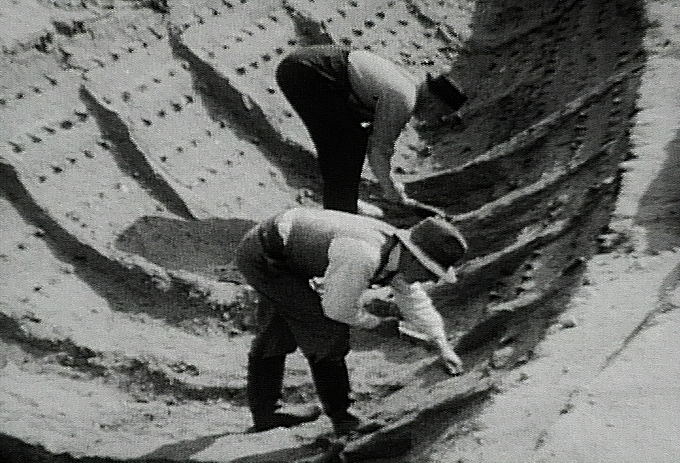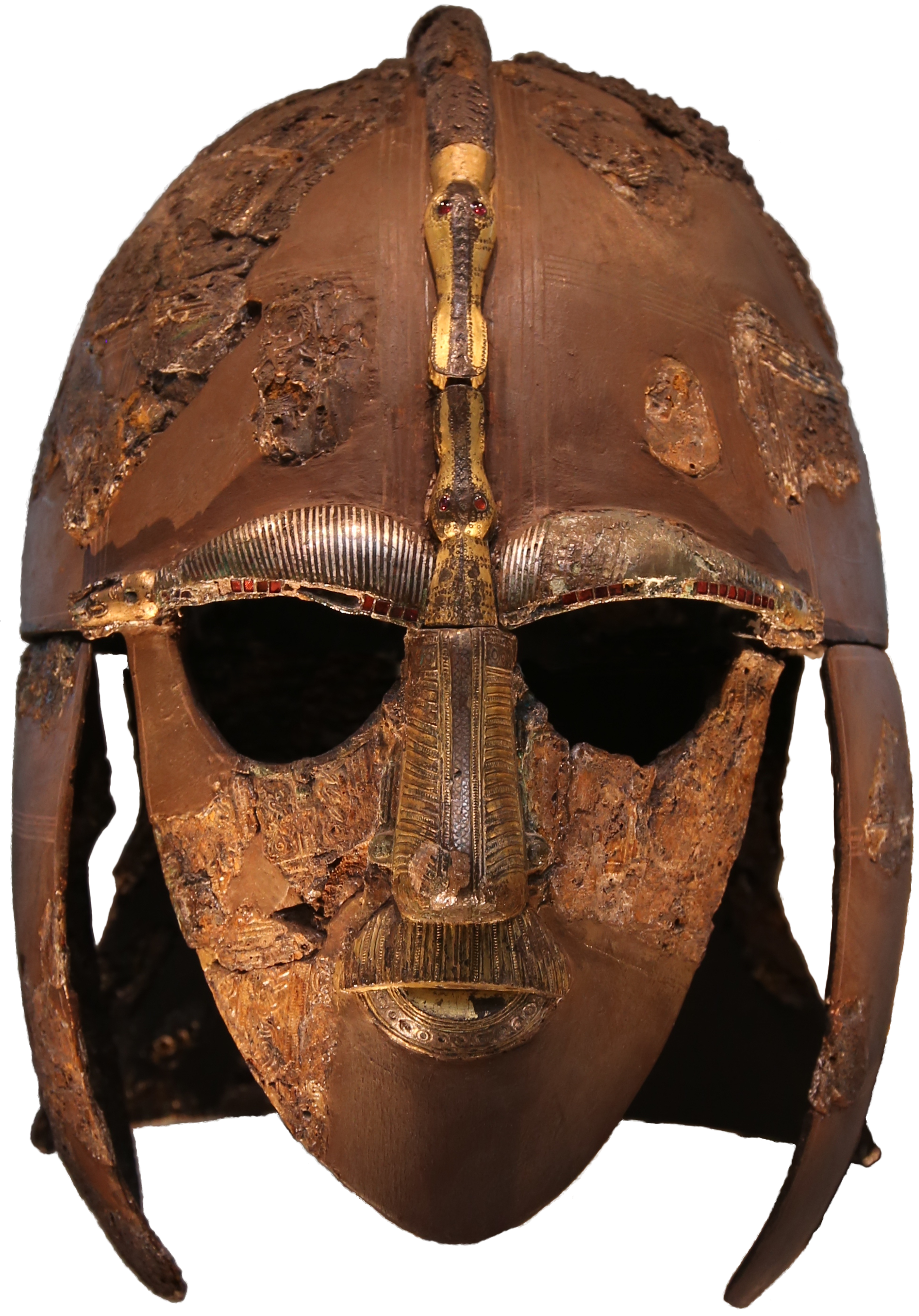|
Rick Kirby
Rick Kirby (born 1952) is an English sculptor born in Gillingham, Kent. He started his career as an art teacher, before quitting after sixteen years to focus on his work. Much of his work is figural, reflecting an interest in the human face and form, and is primarily in steel, which he describes as giving a scale and "whoom-factor" not possible with other media. Early life and education Kirby was born in 1952 into a naval family. He was interested in art as a child, and went on to study it after high school. From 1969 to 1970 he studied at the Somerset College of Art, and from 1970 to 1973 at the Newport College Of Art, from which he received a Bachelor of Fine Arts. This education was both liberating and confusing, he said, and left him without an idea for the direction of his work. From 1973 to 1974 he therefore studied towards an Art Teacher's Diploma at the University of Birmingham, and spent the next sixteen years teaching art. During his time as a teacher Kirby's own ... [...More Info...] [...Related Items...] OR: [Wikipedia] [Google] [Baidu] |
Sutton Hoo Helmet
The Sutton Hoo helmet is a decorated Anglo-Saxon helmet found during a 1939 excavation of the Sutton Hoo ship-burial. It was buried around 625 and is widely associated with King Rædwald of East Anglia; its elaborate decoration may have given it a secondary function akin to a crown. The helmet was both a functional piece of armour that would have offered considerable protection if ever used in warfare, and a decorative, prestigious piece of extravagant metalwork. It is described as "the most iconic object" from "one of the most spectacular archaeological discoveries ever made", and perhaps the most important known Anglo-Saxon artefact. The visage contains eyebrows, a nose, and moustache, creating the image of a man joined by a dragon's head to become a soaring dragon with outstretched wings. It has become a symbol of the Early Middle Ages and "of Archaeology in general". It was excavated as hundreds of rusted fragments, and was first displayed following an initial reconstruc ... [...More Info...] [...Related Items...] OR: [Wikipedia] [Google] [Baidu] |
Sutton Hoo Helmet (sculpture)
''Sutton Hoo Helmet'' is a 2002 sculpture by the English artist Rick Kirby. A representation of the Anglo-Saxons, Anglo-Saxon Sutton Hoo helmet, helmet by the same name found in the Sutton Hoo Ship burial, ship-burial, it was commissioned by the National Trust for Places of Historic Interest or Natural Beauty, National Trust to suspend outside an exhibition hall at the Sutton Hoo visitor centre. At the opening of the centre, the sculpture was unveiled by the Nobel Prize in Literature, Literature Nobel laureate Seamus Heaney on 13 March 2002. It remained in place, dominating the entrance of the exhibition hall, until 2019, when it was moved to the entrance to the Sutton Hoo site. The sculpture is high, wide, deep, and weighs . It is made of Carbon steel#Mild or low-carbon steel, mild steel plates that are coloured red. Designed to have a "fierce presence", it is inspired by the fragmentary appearance of the reconstructed helmet rather than the glistening replica made by the R ... [...More Info...] [...Related Items...] OR: [Wikipedia] [Google] [Baidu] |
River Thames
The River Thames ( ), known alternatively in parts as the The Isis, River Isis, is a river that flows through southern England including London. At , it is the longest river entirely in England and the Longest rivers of the United Kingdom, second-longest in the United Kingdom, after the River Severn. The river rises at Thames Head in Gloucestershire, and flows into the North Sea near Tilbury, Essex and Gravesend, Kent, via the Thames Estuary. From the west it flows through Oxford (where it is sometimes called the Isis), Reading, Berkshire, Reading, Henley-on-Thames and Windsor, Berkshire, Windsor. The Thames also drains the whole of Greater London. In August 2022, the source of the river moved five miles to beyond Somerford Keynes due to the heatwave in July 2022. The lower reaches of the river are called the Tideway, derived from its long tidal reach up to Teddington Lock. Its tidal section includes most of its London stretch and has a rise and fall of . From Oxford to th ... [...More Info...] [...Related Items...] OR: [Wikipedia] [Google] [Baidu] |
Suffolk
Suffolk () is a ceremonial county of England in East Anglia. It borders Norfolk to the north, Cambridgeshire to the west and Essex to the south; the North Sea lies to the east. The county town is Ipswich; other important towns include Lowestoft, Bury St Edmunds, Newmarket, and Felixstowe which has one of the largest container ports in Europe. The county is low-lying but can be quite hilly, especially towards the west. It is also known for its extensive farming and has largely arable land with the wetlands of the Broads in the north. The Suffolk Coast & Heaths and Dedham Vale are both nationally designated Areas of Outstanding Natural Beauty. History Administration The Anglo-Saxon settlement of Suffolk, and East Anglia generally, occurred on a large scale, possibly following a period of depopulation by the previous inhabitants, the Romanised descendants of the Iceni. By the fifth century, they had established control of the region. The Anglo-Saxon inhabitants later b ... [...More Info...] [...Related Items...] OR: [Wikipedia] [Google] [Baidu] |
London
London is the capital and largest city of England and the United Kingdom, with a population of just under 9 million. It stands on the River Thames in south-east England at the head of a estuary down to the North Sea, and has been a major settlement for two millennia. The City of London, its ancient core and financial centre, was founded by the Romans as '' Londinium'' and retains its medieval boundaries.See also: Independent city § National capitals The City of Westminster, to the west of the City of London, has for centuries hosted the national government and parliament. Since the 19th century, the name "London" has also referred to the metropolis around this core, historically split between the counties of Middlesex, Essex, Surrey, Kent, and Hertfordshire, which largely comprises Greater London, governed by the Greater London Authority.The Greater London Authority consists of the Mayor of London and the London Assembly. The London Mayor is distinguished fr ... [...More Info...] [...Related Items...] OR: [Wikipedia] [Google] [Baidu] |
St Thomas' Hospital
St Thomas' Hospital is a large NHS teaching hospital in Central London, England. It is one of the institutions that compose the King's Health Partners, an academic health science centre. Administratively part of the Guy's and St Thomas' NHS Foundation Trust, together with Guy's Hospital, King's College Hospital, University Hospital Lewisham, and Queen Elizabeth Hospital, it provides the location of the King's College London GKT School of Medical Education. Originally located in Southwark, but based in Lambeth since 1871, the hospital has provided healthcare freely or under charitable auspices since the 12th century. It is one of London's most famous hospitals, associated with people such as Sir Astley Cooper, William Cheselden, Florence Nightingale, Alicia Lloyd Still, Linda Richards, Edmund Montgomery, Agnes Elizabeth Jones and Sir Harold Ridley. It is a prominent London landmark – largely due to its location on the opposite bank of the River Thames to the Houses of Parlia ... [...More Info...] [...Related Items...] OR: [Wikipedia] [Google] [Baidu] |
Bronze Sculpture
Bronze is the most popular metal for Casting (metalworking), cast metal sculptures; a cast bronze sculpture is often called simply "a bronze". It can be used for statues, singly or in groups, reliefs, and small statuettes and figurines, as well as bronze elements to be fitted to other objects such as furniture. It is often gilding, gilded to give gilt-bronze or ormolu. Common bronze alloys have the unusual and desirable property of expanding slightly just before they set, thus filling the finest details of a mould. Then, as the bronze cools, it shrinks a little, making it easier to separate from the mould. Their strength and wikt:ductility, ductility (lack of brittleness) is an advantage when figures in action poses are to be created, especially when compared to various ceramic or stone materials (such as marble sculpture). These qualities allow the creation of extended figures, as in ''Jeté'', or figures that have small cross sections in their support, such as the Richard ... [...More Info...] [...Related Items...] OR: [Wikipedia] [Google] [Baidu] |
Glasgow
Glasgow ( ; sco, Glesca or ; gd, Glaschu ) is the most populous city in Scotland and the fourth-most populous city in the United Kingdom, as well as being the 27th largest city by population in Europe. In 2020, it had an estimated population of 635,640. Straddling the border between historic Lanarkshire and Renfrewshire, the city now forms the Glasgow City Council area, one of the 32 council areas of Scotland, and is governed by Glasgow City Council. It is situated on the River Clyde in the country's West Central Lowlands. Glasgow has the largest economy in Scotland and the third-highest GDP per capita of any city in the UK. Glasgow's major cultural institutions – the Burrell Collection, Kelvingrove Art Gallery and Museum, the Royal Conservatoire of Scotland, the Royal Scottish National Orchestra, Scottish Ballet and Scottish Opera – enjoy international reputations. The city was the European Capital of Culture in 1990 and is notable for its architecture, cult ... [...More Info...] [...Related Items...] OR: [Wikipedia] [Google] [Baidu] |
Castlemilk
Castlemilk ( gd, Caisteal Mheilc) is a district of Glasgow, Scotland. It lies to the far south of the city centre, adjacent to the Croftfoot and Simshill residential areas within the city to the north-west, the town of Rutherglen - neighbourhoods of Spittal to the north-east and Fernhill to the east, Linn Park and its golf course to the west, and the separate village of Carmunnock further south across countryside. The area was developed by the Glasgow Corporation as a peripheral housing scheme in the 1950s to accommodate 34,000 people from inner-city slum areas such as the Gorbals. The new residents were provided with open spaces, a clean environment and indoor toilets and bathrooms. The modern development grew around Castlemilk House, a stately old mansion built around Cassilton Tower, which was started in 1460 on the site of a 13th-century castle, and was demolished in December 1969. The population had dropped from 37,000 in 1971 to roughly half that number in 1991. Howev ... [...More Info...] [...Related Items...] OR: [Wikipedia] [Google] [Baidu] |
Bardon Mill
Bardon Mill is a small village in Northumberland, within the vicinity of the ancient Hadrian's Wall. It is located around from Hexham, from Carlisle, and from Newcastle upon Tyne. Nearby landmarks include Allen Banks & Staward Gorge, Sycamore Gap, The Sill: National Landscape Discovery Centre and Vindolanda Roman Fort. Amenities The local pub in Bardon Mill iThe Bowes Hotel Church services alternate weekly between St. Cuthbert's Church at Beltingham and the Church of All Hallows at Henshaw, both of which are very close to the village. There is a very active Women's Institute. A leek club show is held every year, the produce from which is auctioned along with donations the day after the show. Funds are then donated to local charities. Every October, there is the Bardon Mill and Roman Empire conkers championships, which is held on the village green. Local community projects are asked to run a stall at the event to raise funds for their own or community projects. Demograph ... [...More Info...] [...Related Items...] OR: [Wikipedia] [Google] [Baidu] |






